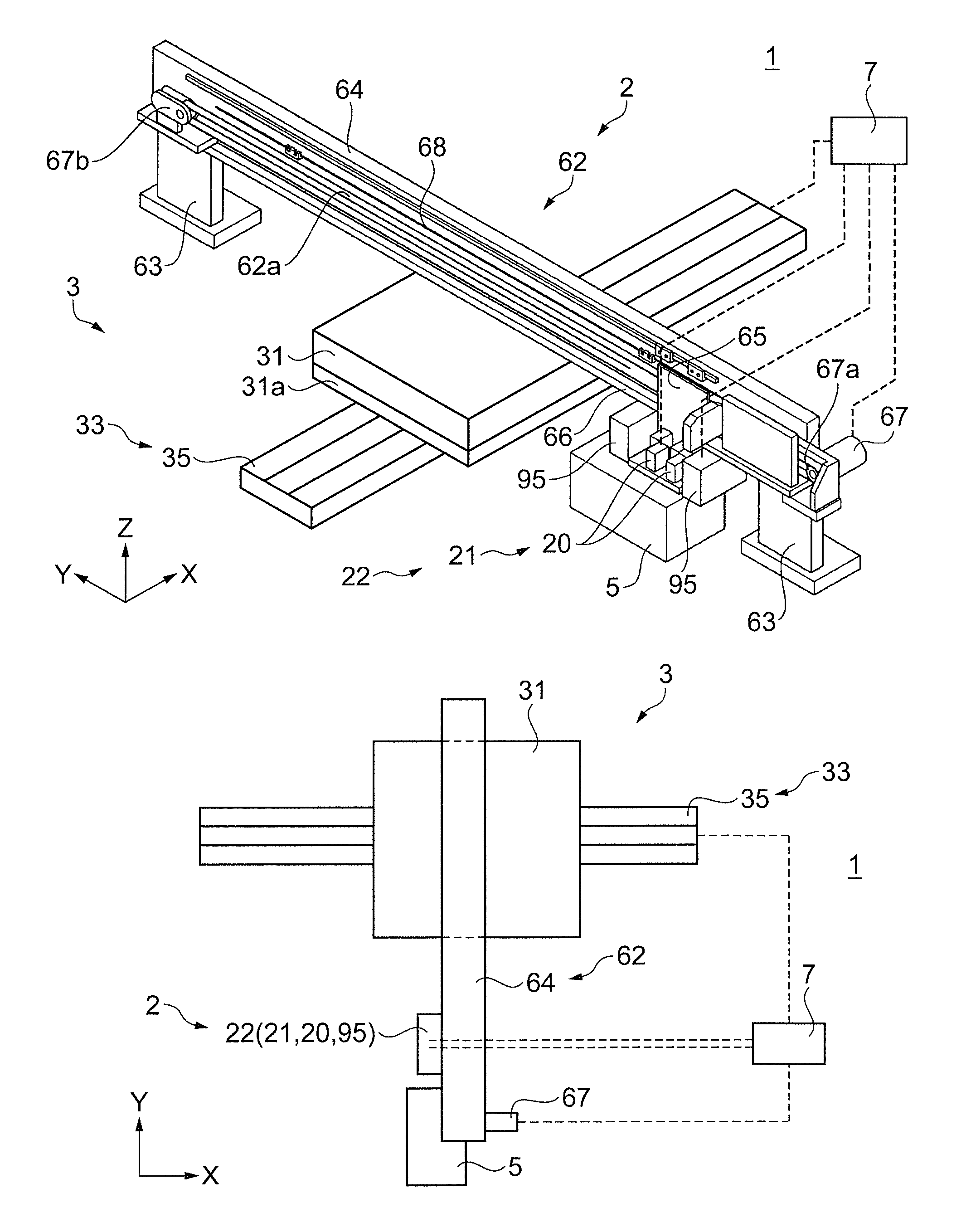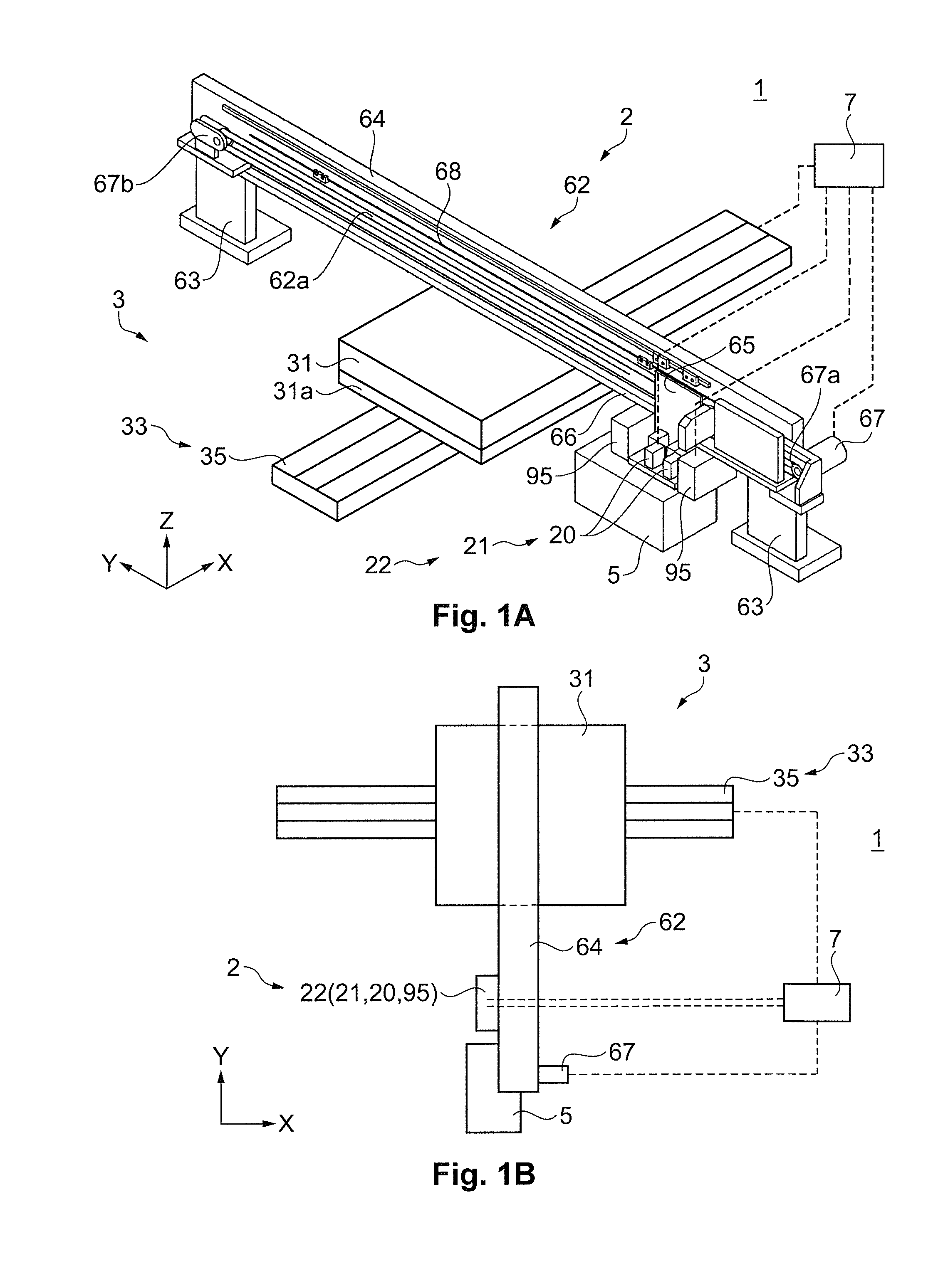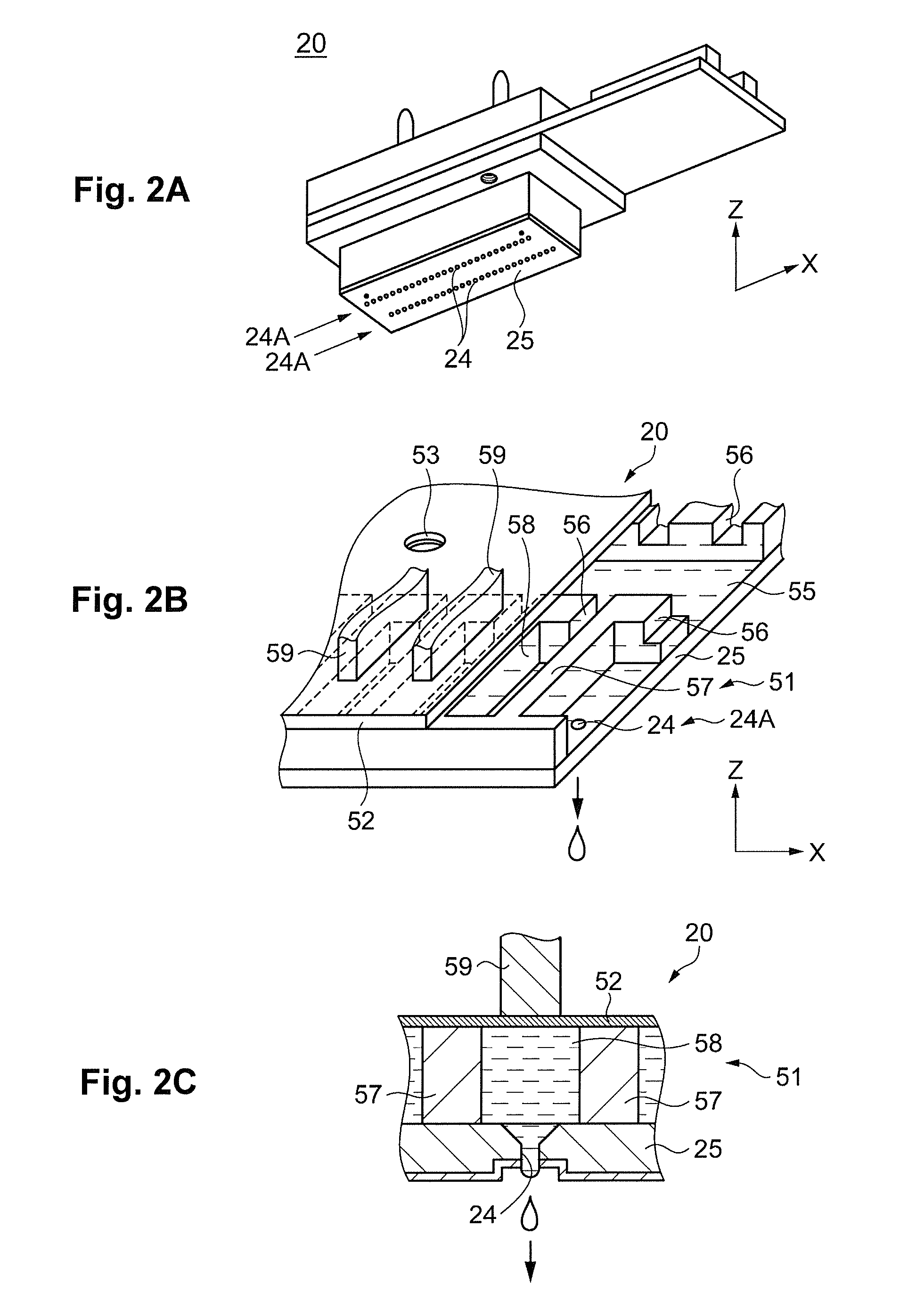Inkjet printer and control method for inkjet printer
a control method and inkjet printer technology, applied in the field of inkjet printers, can solve the problems of high probability of inappropriate portions being irradiated with uv, loss of ability to eject in proper fashion, and inability to control the dose of irradiated uv
- Summary
- Abstract
- Description
- Claims
- Application Information
AI Technical Summary
Benefits of technology
Problems solved by technology
Method used
Image
Examples
first modification example
[0156]In the aforedescribed embodiment, the ultraviolet irradiation time for which the area irradiated with ultraviolet is the UV irradiation area 294 begins when the UV LEDs 96 turn ON at time T21 which follows time T2 by the ON delay time t1. The ultraviolet irradiation time for which the area irradiated with ultraviolet is the UV irradiation area 296 begins when the UV LEDs 96 turn ON at time T2; and at a time T51 after the set irradiation time interval t2 following turning ON, the UV LEDs 96 are turned to OFF. However, the ultraviolet irradiation time may be an ultraviolet irradiation time having as the ON time thereof a point in time following elapse of an ON delay time subsequent to a reference time, and having as the OFF time a point in time following elapse of a predetermined time subsequent to the ON time. Alternatively, the ultraviolet irradiation time may be an ultraviolet irradiation time having as the ON time thereof a point in time following elapse of an ON delay time ...
second modification example
[0157]In the aforedescribed embodiment, the ultraviolet irradiation time for which the area irradiated with ultraviolet is the UV irradiation area 294 starts by turning the UV LEDs 96 to ON at time T21 which follows time T2 by the ON delay time t1. The time T2 is the point in time that the current value of the drive current of the drive motor 67 is equal to or greater than the irradiation boundary value A1, and the irradiation boundary value A1 is set to a value that is slightly lower than the drive current value observed when the carriage unit 22 is being scanned at the constant scanning speed VC. However, the starting point of the ON delay time may be, for example, the point in time of startup of the drive motor 67. Specifically, the first output value may be set to the smallest possible value within the range detectable by the drive output detecting part.
third modification example
[0158]In the aforedescribed embodiment, the ultraviolet irradiation time for which the area irradiated with ultraviolet is the UV irradiation area 296 starts by turning the UV LEDs 96 to ON at time T2; and at a time T51 after the set irradiation time interval t2 following turning ON, the UV LEDs 96 are turned to OFF. The time T2 is the point in time that the current value of the drive current of the drive motor 67 is equal to or greater than the irradiation boundary value A1, and the irradiation boundary value A1 is set to a value that is slightly lower than the drive current value observed when the carriage unit 22 is being scanned at the constant scanning speed VC. However, the starting point of the predetermined time until the curing-light-emitting part turns OFF may be, for example, the point in time of startup of the drive motor 67. Specifically, the first output value may be set to the smallest possible value within the range detectable by the drive output detecting part.
PUM
 Login to View More
Login to View More Abstract
Description
Claims
Application Information
 Login to View More
Login to View More - R&D
- Intellectual Property
- Life Sciences
- Materials
- Tech Scout
- Unparalleled Data Quality
- Higher Quality Content
- 60% Fewer Hallucinations
Browse by: Latest US Patents, China's latest patents, Technical Efficacy Thesaurus, Application Domain, Technology Topic, Popular Technical Reports.
© 2025 PatSnap. All rights reserved.Legal|Privacy policy|Modern Slavery Act Transparency Statement|Sitemap|About US| Contact US: help@patsnap.com



